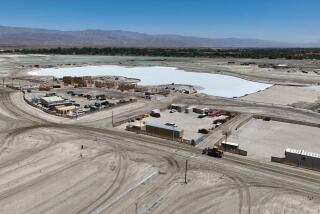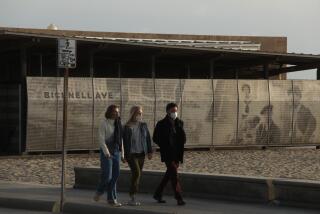Coney Island’s future looks like a tug of war
Ah, summer at Coney Island: Carnies beckoning passersby to try their luck shooting the freak. Wild screams coming from the Cyclone coaster. Elephants taking on humans to see who can eat the most hot dog buns.
But the rollicking, somewhat seedy beachfront park -- which after a rainy June blossomed over the sunny July 4 weekend into its traditional blend of family-friendly fun and boardwalk bawdiness -- also is at the center of an ugly dispute this year among those who agree it needs a face-lift but disagree over how to revive its fortunes.
In one corner is New York City, whose council is to vote late this month on a redevelopment project, boasting restaurants and hotels, that was approved in June by the Planning Commission. In the other are preservationists who say the plan would ruin Coney Island’s salty flavor by plunking high rises in its heart. In the middle sits a developer, Joseph Sitt, who has plans of his own and has refused to sell the city the land it needs.
The dispute is an unavoidable topic here along the wooden boardwalk, where squeals of visitors on the amusement park rides compete with music from revelers on the sand.
“The whole idea that Coney Island is dead, that Coney Island is done, is wrong,” Stephen Yaros said as three Asian elephants and three people, their stomachs bloated from shoveling buns into their mouths, dawdled behind him.
Yaros is a spokesman for Feld Entertainment, which this summer has brought the Ringling Bros. and Barnum & Bailey Circus to Coney Island for the first time. On July 3, the circus featured what it billed as the world’s first cross-species eating contest -- won easily by the elephants, which placidly devoured 505 buns in six minutes to their human competitors’ 143.
(Like most things at Coney Island lately, the event was not without controversy. “Barbarians!” bellowed animal rights protesters, although circus officials contended that the buns were well-suited to the pachyderms’ vegetarian diets.)
“I think there was a need for this,” Yaros said, the collection of colorful circus tents rising behind the sand. Although he said Ringling Bros. played no favorites in the current dispute -- “We want to be Switzerland” -- news of the city’s revitalization efforts prompted the decision to plan a 12-week run here.
But the circus did not set up on Sitt’s 10.5 acres as originally planned, a fact that has boosted city officials in their battle with the chief executive of Thor Equities development corporation.
Sitt’s property once housed Astroland amusement park, whose centerpiece was a 71-foot-long rocket ship designed to thrill riders with a virtual trip into space. But Astroland closed in September after nearly half a century, leaving a desolate swath in the center of Coney Island.
Sitt has vowed to return Astroland to its former glory with amusement park rides, housing, hotels and shops.
For now, however, the weed-filled lots are dominated by tents that on weekends house vendors, hawking $5 bikinis and homemade cupcakes.
Lauren Smith, who grew up near Coney Island, recalled when the amusement area drew crowds year-round to its roller coasters, carousels and oddity shows.
“It’s dead now” on weekdays, said Smith, an array of her baked goods for sale on the table in front of her.
Smith said Sitt’s flea market, dubbed Flea by the Sea, was drawing crowds. “It does suck that Astroland is gone, but at least they’re trying to do something with the community,” Smith said.
The city says its Coney Island plan would bring thousands of jobs to the depressed area by turning the beach and boardwalk into a year-round attraction with sit-down restaurants, hotels and other businesses. But Sitt said that if the city wants to build, it has to pay him more than the $105 million it has offered for his land.
Preservationists such as Charles Denson, author of “Coney Island: Lost and Found,” say Sitt and the city are more interested in their own financial interests than in helping the community. At the very least, he said, the city should modify its plan by moving the proposed high rises away from Coney Island’s heart and devoting more space to amusement park facilities.
But with Mayor Michael R. Bloomberg facing reelection this year, Denson is skeptical.
“The good news is that Bloomberg took an interest in Coney Island,” he said. “The bad news is that Bloomberg took an interest.”
More to Read
Sign up for Essential California
The most important California stories and recommendations in your inbox every morning.
You may occasionally receive promotional content from the Los Angeles Times.











